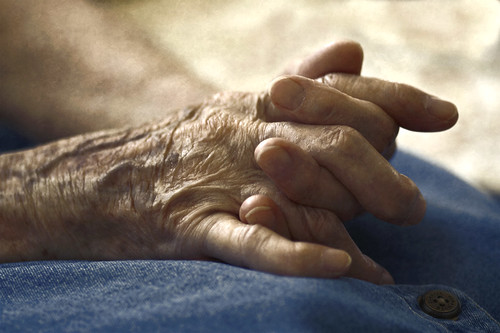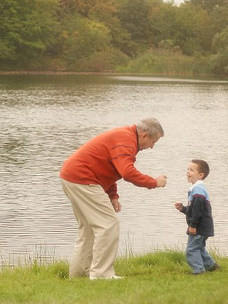 Is arthritis just an unavoidable part of getting older? Unfortunately, for some people, a history of arthritis runs deep in their families. But while it’s true that genetics can play a big role in whether or not you will develop arthritis, environment can play a significant role as well.
Is arthritis just an unavoidable part of getting older? Unfortunately, for some people, a history of arthritis runs deep in their families. But while it’s true that genetics can play a big role in whether or not you will develop arthritis, environment can play a significant role as well.
The most common form of arthritis, osteoarthritis (also called “degenerative joint disease”) is influenced partially by age and genetics. But it’s also triggered by mechanical stresses such as untreated joint injuries.
How Joint Injuries Affect Arthritis
Here’s basically what happens:
If that misalignment or injury irritates one of the many nerves coming out of the spinal column, your body will try to relieve the pressure on the nerve by stabilizing it—that is, reducing joint mobility. This may include muscle spasms, sudden contraction of the muscles around the joint (and these can be very painful in their own right!).
Let’s say a vertebrae in your neck or spine receives some sort of stress or injury. Perhaps it got forced out of alignment after a minor impact, or when you “threw out your back” lifting a heavy object. Or perhaps the joint grows stiff from your sitting in the same position every day. Your body recognizes there’s an injury, and tries to stabilize it.
But in the case of a misaligned joint, stabilizing doesn’t solve the initial problem. And as irritation on the nerve continues, the body will continue to try to stiffen the joint and keep it immobile.
Circulation may be slowed in the joint area as well. Discs between vertebrae can grow thinner at a faster rate than normal. And after many years, painful bone spurs can even form around the area.
You may not be aware that all of this is slowly going on. But if a joint injury isn’t fully healed, it can become a source of osteoarthritis pain 15 to 20 years down the road.
Preventing Arthritis Pain through Lifestyle
 So while genetics and age do play a big part in whether you’ll be affected by osteoarthritis, you can take steps to prevent some arthritis pain. In our own experience, we’ve seen that among those who developed genetic arthritis, those who lead an active lifestyle do far better than those who are mostly sedentary.
So while genetics and age do play a big part in whether you’ll be affected by osteoarthritis, you can take steps to prevent some arthritis pain. In our own experience, we’ve seen that among those who developed genetic arthritis, those who lead an active lifestyle do far better than those who are mostly sedentary.
Here are some basic lifestyle patterns that can help reduce or prevent arthritis pain:
- Stay active. Regular exercise keeps you flexible, improves heart health and overall circulation, increases your energy and boosts your immune system. If you already have some joint pain, try low-impact activities such as swimming, walking, or bicycling, or exercises that focus on movement and flexibility such as yoga or tai chi.
- Avoid a sedentary lifestyle. Turn off the TV more often and engage in more active hobbies, such as walking the dog or gardening (just watch your posture and use a knee pad!). Find ways to add activity to your work day—stretching and standing often, taking the stairs instead of the elevator, and walking when possible.
- Get proper nutrition. Provide your bones and joints with the vitamins they need to stay strong and avoid injury, and drink plenty of water. (Dr. Maggio will be happy to give you tips for getting the nutrition you need.)
- Maintain a healthy weight. Carrying additional body weight is associated with the development of arthritis, especially in the knees.
- Don’t smoke. Smoking is terrible for your health overall. In relation to arthritis, tobacco smoke reduces circulation to your bones and tissues, speeds up disc degeneration, makes you more susceptible to sprains and other joint injuries, and makes it difficult for you to stay active.
How Chiropractic can help
What about injuries or stiffness that already exist? That’s where chiropractic comes in.
The goal of chiropractic is to restore proper mobility to the joint. Correcting misalignments will relieve pressure on and irritation of nerves, which will signal to the body to “cease and desist” from trying to stabilize the joint.
Chiropractic, along with exercise and stretching, will also improve circulation and reduce pain. (And for those concerned about traditional chiropractic being too much for already-sore joints, the ProAdjuster instrument our office uses is very gentle and can be used when you are sitting up or standing.)
And by keeping the spine properly aligned and flexible, regular chiropractic care can help keep you active and mobile and help reduce the risk of injury in the first place.
If you’re noticing stiffness or pain in your joints after a fall or from “overdoing it” over the weekend, call us and let us check it out before it becomes a bigger problem. Don’t wait for it to develop into something more painful.
So is it possible to prevent arthritis? Maybe not 100%, especially not for those who are genetically predisposed to it. But by staying mobile and getting injuries taken care of now, you may significantly reduce the severity of osteoarthritis pain in the future.
Photo credit: Tim Hamilton via Compfight and Patrick via Compfight
Leave A Comment